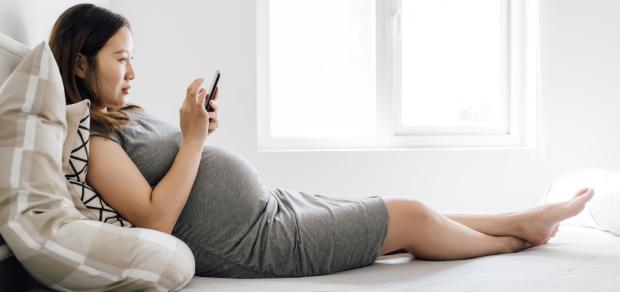
Why It’s Common to Get Varicose Veins During Pregnancy
At some point in your pregnancy, you may glance down and notice purple or blue lines running up and down your calves. These are known as varicose veins, and they appear on up to half of pregnant people.
“Varicose veins are dilated, long, twisting veins that usually appear in the lower extremities,” explains Alex Robles, M.D., a board-certified ob-gyn at Columbia University Irving Medical Center, in New York City. (According to Robles: When veins get swollen in your rectal area, they’re called hemorrhoids—another annoying side effect of pregnancy).
What Causes Varicose Veins?
Veins typically have a one-way valve that keeps the blood flowing upward against gravity toward the heart. But sometimes these valves can weaken and allow blood to back up, causing the veins to swell.
Why Do You Get Varicose Veins in Pregnancy?
One of the main reasons pregnant people can experience varicose veins is that, as the uterus grows larger, particularly in the third trimester, it presses down on the main vein returning blood to the heart. This causes blood to pool in the legs, explains Tara Scott, M.D., a board-certified ob-gyn and medical director at Forum Health, in Akron, Ohio.
Also, when you’re pregnant, your blood volume increases up to around 40%, but since you still have the same number of veins, they need to do much more work. On top of that, Scott says that some people have a genetic predisposition to developing varicose veins.
Should You Worry About Varicose Veins?
Because varicose veins are near the surface of the skin, they may be easily noticeable. Even if you don’t like how they look, they’re generally not something to worry about, Robles says. However, if you experience pain and redness and see more swelling on one calf than the other, that can be a sign of deep vein thrombosis, or a blood clot. Call your doctor immediately in that case, Robles says.
The good news is that if you develop varicose veins during pregnancy, they should clear up after you deliver your baby, and your veins and blood flow should return to their pre-pregnancy state.
What to Do About Varicose Veins in Pregnancy
If your varicose veins are visually bothersome or physically uncomfortable, try these strategies:
- Wear loose clothing. Tight pants or leggings can further restrict circulation and increase discomfort.
- Try not to stand up for long periods of time. “Being on your feet all day is a risk for varicose veins, due to gravity,” Robles says. This is particularly a problem for those who work in jobs that keep them on their feet, like teaching, nursing, or retail sales.
- Raise your feet when sitting or reclining. To keep blood flowing in the right direction, prop your feet up on a pillow when you’re on the sofa watching TV, or at night when you’re lying down in bed.
- Try compression stockings. Some research suggests that wearing special stockings called “compression stockings” that gently squeeze the legs can reduce the diameter of the veins. “You can ask your doctor about prescription hose that have a higher-grade compression,” suggests Scott.
- Move your body. Getting regular exercise (like walking or hiking) improves your circulation and prevents blood from pooling in your lower legs, which will make varicose veins worse.
You May Also Like:
Want to Read More?
Access all of Dario Connect’s content, community, and experts for free!
Already a member? Login
Want to Read More?
Access all of Dario Connect’s content, community, and experts for free!
sign UP For FreeAlready a member? Login

